Hail to the Chief Read online
Hail to the Chief
Ed Mcbain
Hail to the Chief
Ed McBain
This edition published 1975 by Pan Books Ltd. ISBN 0-330-24491-4
Contents
Chapter One
Chapter Two
Chapter Three
Chapter Four
Chapter Five
Chapter Six
Chapter Seven
Chapter Eight
Chapter Nine
Chapter One
They found the bodies in an open ditch on the northernmost extreme of the 87th Precinct. The telephone company had torn up the street early the morning before, to get at the underground cables. The repairmen finished the job by nightfall, when the temperature dropped below freezing. They had covered the ditch with temporary wooden planking, and had erected blinking barriers around the excavation, to keep motorists away from the long, narrow, covered trench in the earth. Someone had ripped up the planking and dropped the six bodies into the ditch. Two radio-car cops, on routine patrol near the boat basin, spotted the ripped-up sections of planking and flashed their torches into the excavation. The date was January the sixth. The time was three in the morning. By three-ten, Detectives Steve Carella and Bertram Kling were on the scene.
The bottom of the ditch was a maze of electrical and telephone cables. Water had seeped into the ditch, combining with the freshly spaded earth to form a quagmire which had frozen over at nightfall, so that the cables now seemed embedded in brown plastic. The six bodies were lying in angular confusion on top of the mud-colored ice. There was another color staining the ice. The color was blood. The bodies were naked. Their nakedness made the night seem even colder than it was. Carella, wearing a fleece-lined leather jacket, brown woolen gloves, and earmuffs, looked down into the ditch. Kling was fanning the beam of his flashlight over the bodies. Ten feet from where they were standing, two radio motor patrol cars blinked their revolving red lights into the night. Now that the detectives were here, the patrolmen had gone back into the cars to keep warm.
There were three men, two young girls, and a baby in the ditch. The baby was clutched in the arms of one of the girls. Carella did not turn away until he saw the baby. Up to that moment, this was another homicide, grislier than most, but you don't turn away from any of them unless you're going to turn away from all of them. The sight of the dead baby caused a short, sharp stab of pain somewhere behind his eyes. He said 'Jesus' as he turned away from the ditch, and behind him he heard Kling catch his breath, and knew that he had seen the baby, too. Kling turned off the flashlight. They moved farther away from the ditch, as though proximity to it might in some way be contaminating. Their vapored breaths feathered out onto the air. In the distance they heard a police siren. For several moments neither of the cops said anything. Kling, gloveless and hatless, his blond hair blowing in the wind, put the flashlight under his arm, and immediately thrust both hands into the pockets of his car coat. His shoulders hunched, his chin ducked into his collar, he said, very softly, 'It reminds me of the bookshop,' and for a moment Carella did not know what he meant. And then, of course, he recalled a day in October, thirteen years ago, when he and Kling had stepped into a bookshop on Culver Avenue and found four dead bodies on the floor. One of the victims had been Kling's girl friend, Claire Townsend.
Physically, Kling had not changed very much in those thirteen years - oh, perhaps around the eyes a little, a weariness around the eyes. But he still looked quite young, the blond hair and hazel eyes combining with a clean-shaven, well-scrubbed sort of face that never seemed to age. Carella looked into that face now, studying the eyes, trying to fathom whether Kling's memory of the bookshop was as vivid as his own, or whether he had learned to deal with that long-ago pain by blocking it out, pretending it had never happened. Jesus, that day. Jesus, when he had called the lieutenant and told him to get over there right away because Kling's girl had been killed - Jesus, the way he had stammered on the telephone, almost unable to get the words past his lips.
Both men looked up at the sound of the approaching siren. An unmarked car pulled to the curb, its tailpipe throwing a blue-gray ghost into the air. The two detectives who stepped out of the car were dressed almost identically, each wearing black overcoat and gray fedora, black leather gloves, blue woolen muffler. Both of the men were sturdily built, with wide shoulders and beefy chests and thighs, craggy faces and eyes that had seen it all, seen it all: Monoghan and Monroe from Homicide, the Tweedledum and Tweedledee of criminal investigation.
'Well, well, you guys never sleep, do you?' Monoghan said.
'They're always awake,' Monroe said.
'Always got a body or two for us in the middle of the night, don't you?' Monoghan said.
'Few more than that this time,' Carella said.
'Yeah?' Monroe said.
'Where are they?' Monoghan asked.
'Over in the ditch there,' Kling said.
They watched as the two Homicide detectives walked over toward the ditch. In the city for which these men worked, the appearance of Homicide cops at the scene of a murder was mandatory, even though the subsequent investigation was handled by the precinct detectives catching the squeal. Carella and Kling looked upon the cops from Homicide as a nuisance. In rare instances, and presumably because they were 'specialists,' they would sometimes come up with an idea that helped expedite the solution of a case. More often than that, however - rather like eye, ear, nose, and throat men advising a general practitioner that his patient was deaf, dumb, blind, and suffering besides from sinus trouble and laryngitis - they merely stated the obvious, confused the issues, and demanded reports in triplicate for their own department. Homicide cops, in short, were pains in the ass to detectives actually in the field trying to solve murder cases. Monoghan and Monroe were supreme pains in the ass.
'Look at this, willya?' Monoghan said, throwing the beam of his flashlight into the ditch.
'Must be at least six of them down there,' Monroe said.
'Half a dozen, anyway,' Monoghan said.
'What's that?' Monroe said. 'A baby?'
'An infant,' Monoghan said.
'Now I seen everything,' Monroe said.
'I seen one worse than this,' Monoghan said.
'Worse than a baby in a ditch in the middle of January on a night you could freeze your balls off?'
'Much worse,' Monoghan said. 'This was back in the fifties, I was still working out of the Eight-Three, that's one hell of a precinct, I can tell you.'
'Oh, don't I know it,' Monroe said. 'That's the precinct where Ralphie Donatello got shot in the back with an African blowgun.'
'A poison dart,' Monoghan said.
'Yeah,' Monroe said.
'That was during my time,' Monoghan said. 'I used to know Ralphie. He was a damn good cop. Can you imagine? A poison dart?'
'Truth is stranger than fiction,' Monroe said, and shook his head.
'Anyway, this case I was on, there were fourteen old ladies buried in the basement. Fourteen of them. Made Bluebeard look like a kid who didn't even shave yet. Fourteen of them.'
'How old?'
'Old. Seventy, eighty, like that. Guy stabbed them all and put them in the basement. The way we found the bodies was a plumber came in to work on some pipes. That was worse than this. Much worse.'
'Yeah, but these are all young kids,' Monroe said, leaning over the edge of the ditch for a better look.
'Not so young. The guy with the beard looks twenty-four, twenty-five.'
'Yeah, but the others look like teenagers.'
'The girls especially.'
'Fourteen or fifteen, huh?'
'Little older maybe.'
'Sixteen?'
'Seventeen, maybe.'
'Nice tit
s on the black one,' Monroe said.
'Yeah,' Monoghan said appreciatively.
Some distance away from the two Homicide cops, Carella and Kling stood silently, their hands in the pockets of their coats. Carella was a tall man, but his head was ducked and his shoulders were hunched against the cold, and he seemed shorter now than he actually was. In addition, his face was pinched and pale, his downward-slanting brown eyes (which often lent an Oriental cast to his features) were watering, his lips were chapped, he had cut himself shaving, and he looked like a wino searching for a warm doorway. So whereas he normally gave the appearance of a man whose tremendous strength was camouflaged in the deceptively trim body of an athlete, tonight he looked sniveling and scrawny in his leather jacket. He was cold, and he didn't like two hairbags from Homicide discussing those bodies so casually. He took out his handkerchief and blew his nose. Neither the lab technician nor the medical examiner had yet arrived. It was going to be a long night.
Monoghan and Monroe were walking back. 'Got yourselves a regular massacre this time,' Monoghan said,
'Little Big Horn,' Monroe said.
'My Lai,' Monoghan said.
'Must be three or four bullet holes in each and every one of them.'
'Even the baby.'
'The infant.'
'Not a stitch on any of them.'
'Must've plugged them someplace else and then dragged them over here to dump 'em.'
'Probably heading for the river.'
'A watery grave.'
'Burial at sea.'
'Spotted the ditch and decided to get rid of them here.'
'Unless he brought 'em here bare-assed and shot them on the spot.'
'That sounds dubious,' Monroe said,
'But possible.'
'But far-fetched.'
'Who knows?' Monoghan said, and shrugged.
'Anyway, you guys got your work cut out for you,' Monroe said. 'Without no clothes on them, you'll even have trouble getting a positive identification.'
'Unless a basketball team is reported missing,' Monoghan said.
'Only, five people on a basketball team,' Monroe said. 'There's six in the ditch.'
'Maybe the baby was a mascot or something.'
Monroe shrugged. He turned to Carella and said, 'Keep us informed, huh?'
'Sure,' Carella said,
'You don't mind if we split before the M.E. arrives, do you? It's colder'n an Eskimo's ass out here.'
'We'll let you know what he says,' Carella said.
'Anyway, he won't come up with no surprises,' Monoghan said. 'They were shot, and from the looks of the burn marks, it was at close range.'
'Must be some nut,' Monroe said.
'Some madman.'
'Some deranged person. Who else would put three bullet holes in a baby?'
'Three or four,' Monoghan corrected.
'Yeah, three or four,' Monroe said.
'It's got to be some madman.'
The two Homicide cops went back to their car. Carella and Kling watched while they drove off. One of the radio motor patrolmen had gone out for coffee, and he came back with two containers for Carella and Kling. In the empty hours of the night, steam rising from the open containers, steam rising too from the manhole covers in the black asphalt street, they sipped at the hot coffee and waited for the rest of the investigative team to arrive. On the river, a tugboat's horn bleated briefly, and then was silent. It sounded as though someone had hit the button by accident.
Carella and Kling waited.
In a little while, if they didn't freeze first, they would have information from the laboratory technician and the medical examiner.
There were no bullets in any of the bodies, nor were there bullets or cartridge cases in the ditch where the bodies had been found. It had to be assumed (as Monoghan, or Monroe, or both had stated) that the victims had been shot elsewhere and then transported to the lonely side street off the River Harb. The medical examiner ascertained that multiple gunshot wounds had been the cause of death in each case, but he would not go out on a limb concerning the post-mortem interval. Body heat and the absence or presence of rigor mortis are determining factors in establishing the moment of death, and since the stiffs found in the ditch were literally stiff, having been put on ice (so to speak), the M.E. was simply unwilling to even guess at how long the victims had been dead. Nor could he tell from the size or shape of the wounds whether the murder weapon had been a rifle or a pistol, although he was willing to venture (in keeping with the prognostications of those master criminologists Monoghan and Monroe) that judging from the burn marks, the victims had been shot at close range.
The man from the Photo Unit photographed the ditch and the vicinity surrounding the ditch, and the bodies lying in the ditch, and the buildings directly opposite the ditch, and then (after the position of the bodies had been marked) he photographed the empty ditch itself. This last had nothing to do with solving the crime. It had only to do with getting a conviction once the murderer was found, since very often dead bodies in photographs of a murder scene were considered objectionable or highly inflammatory to a jury and were not permitted in court.
Carella and Kling had sketched the murder scene before the M.E. arrived, and had written an accurate description of it as well, including weather conditions, visibility, and illumination provided by street lamps or other light sources. Since the bodies were all naked, and since an examination of hands would be necessary for identification purposes, they covered the victims' hands with plastic bags the moment the M.E. finished his examination. The bodies were carried off to the morgue in two separate ambulances, and Kling, Carella, and the lab technician searched the ditch and the street for possible footprints, tire marks, weapons, anything that might help them to determine how the thing had happened and who had done it. They then made a record of the license plates on all of the parked autos near the scene of the crime, and went back to the squadroom.
The photographer, the lab technician, and the medical examiner were just beginning.
Fingerprinting a dead body (clothed or naked) is no more difficult than fingerprinting a live one. Once you get the fingers unclenched, the rest is duck soup. Taking a picture of a dead body is quite another cup of tea. Dead bodies have a tendency to look dead, you see. If the eyes are open (and there is nothing scarier than walking into a room and finding a dead person staring up at the ceiling), they retreat into their sockets and develop a grayish film over the eyeballs. If the eyes are closed, and the body is photographed that way, the face takes on an entirely different appearance that makes identification by wife or business partner almost impossible. Then, too, the lips are generally bloodless and of the same color as the victim's complexion. And the face, robbed of animation, seems more like a mask than something that had once been alive and warm. When a police photographer is taking a picture of a corpse for identification purposes, he must bring all the skills of a cosmetician to his work. Before lifting or relifting closed eyelids, he will insert glycerin and water into the sockets, to give the eyes a shine that will simulate in death the spark of life, and cause them to resemble false mirrors of the soul. He will daub the lips with dye and alcohol, restoring to them a blush which, if not quite kissable, is at least photograph-able. He will use powder and make-up, collodion or wax to achieve the desired result of having a photographed dead man look the way he might have when he was alive. (And nine times out of ten, when a person is shown such a photograph, he will immediately say, 'He looks dead.')
Fingerprints and photographs do not identify a dead person. They only provide means of identification, assuming the unfortunate deceased had a police record or served in the armed forces or worked for municipal, state, or federal governments or marched in anti-war protests; and/or further assuming that a friend or relative, when looking at a photograph, will jump up from his seat and shout, 'Eureka, that's Harry!' It's nice when a corpse has a tattoo on the right biceps, a replica of the Golden Gate Bridge at sunset perhaps, with below it,
in blue and red ink, the words 'My name is Harry Lewis.' Very few corpses are that obliging, though occasionally a tattoo will provide some insight into a dead man's past, or even his occupation. It is no secret, for example, that many tattooed men were, at one time in their lives, sailors. (But then again, if a man had been in the Navy, his fingerprints would be on file and there'd be no need for going the circuitous tattoo route.) Besides, there are even better ways of guessing at a dead man's occupation.
In many respects a dead and naked human being is no more easily identifiable than a slab of beef hanging in a butcher shop. The human being, however, does possess some physical characteristics that differentiate it from the beast of the field. Like hands and fingernails. A steer does not have hands and fingernails. Moreover, a steer does not use his hands and fingernails (which he doesn't have in the first place) to perform certain jobs linked with societal development. The human being does. A skilled medical examiner can therefore make some pretty shrewd occupational determinations based on the shape, length, condition, and trim of the fingernails as well as the calluses or lack of calluses on the fingers or other parts of the hand.
A workman's fingernails may be chipped, or caked with traces of his specialty - brick dust, plaster, soil, paint - and will rarely be manicured. A typist, pianist, court stenographer, or masseuse will definitely not have long fingernails. A man who repairs shoes will have a characteristic callus on his left thumb. An engraver will have a similarly identifiable callus on his right thumb. (Steers sometimes develop calluses on their hoofs, but these are caused by repeatedly pawing the ground and cannot be used as a means of establishing the occupation of the slaughtered animal.)
In truth, none of the M.E.'s career guesses serve as much more than guides to the detective in the field; if a pharmacist will characteristically have brittle fingernails, you can turn up a corpse with brittle fingernails who happens to be a pimp. Or a motion-picture producer. Or an airlines pilot. Or a ventriloquist. But a couple of guys with six corpses on their hands needed all the help they could get, and were grateful for whatever the lab or the medical examiner's office gave them.

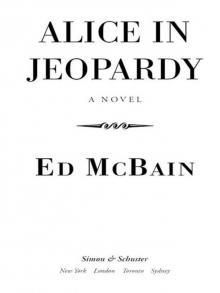 Alice in Jeopardy: A Novel
Alice in Jeopardy: A Novel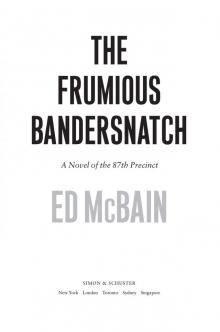 The Frumious Bandersnatch
The Frumious Bandersnatch The McBain Brief
The McBain Brief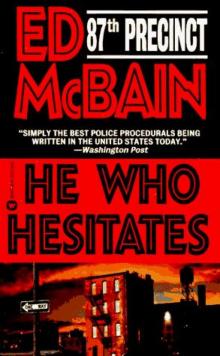 He Who Hesitates
He Who Hesitates Mischief
Mischief Fat Ollie's Book: A Novel of the 87th Precinct
Fat Ollie's Book: A Novel of the 87th Precinct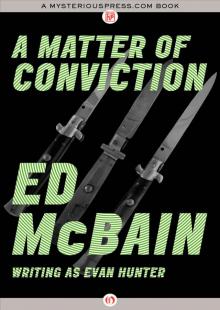 A Matter of Conviction
A Matter of Conviction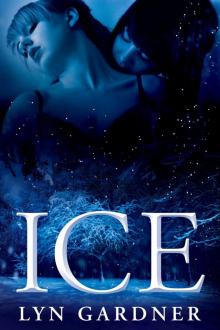 Ice
Ice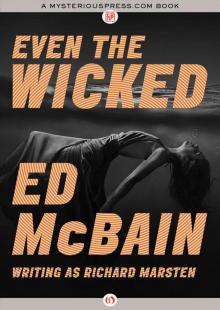 Even the Wicked
Even the Wicked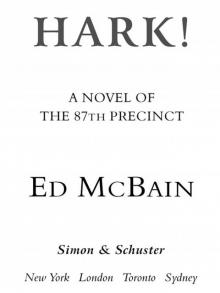 Hark!
Hark!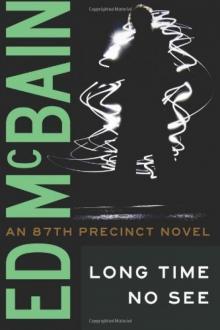 Long Time No See
Long Time No See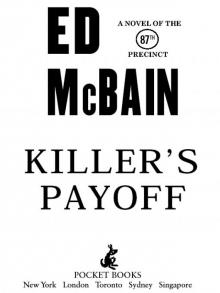 Killer's Payoff
Killer's Payoff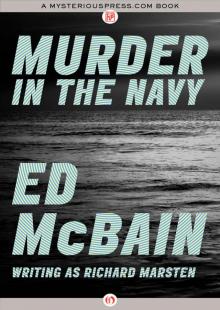 Murder in the Navy
Murder in the Navy A Horse’s Head
A Horse’s Head So Nude, So Dead
So Nude, So Dead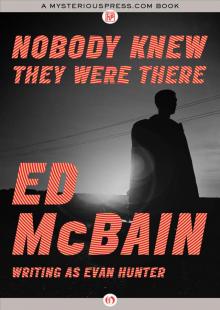 Nobody Knew They Were There
Nobody Knew They Were There Alice in Jeopardy
Alice in Jeopardy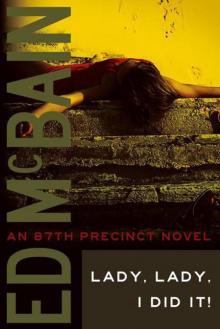 87P14-Lady, Lady, I Did It!
87P14-Lady, Lady, I Did It! Fuzz
Fuzz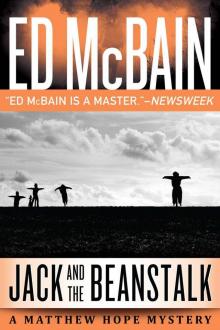 Jack and the Beanstalk (Matthew Hope)
Jack and the Beanstalk (Matthew Hope)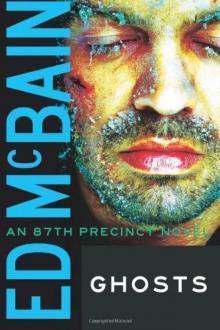 Ghosts
Ghosts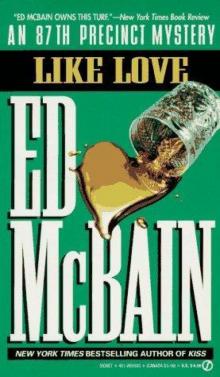 Like Love
Like Love Cut Me In (Hard Case Crime)
Cut Me In (Hard Case Crime)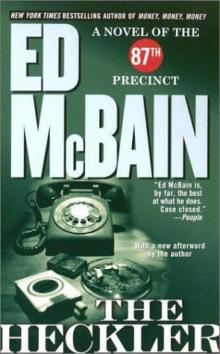 The Heckler
The Heckler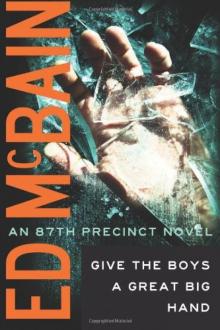 Give the Boys a Great Big Hand
Give the Boys a Great Big Hand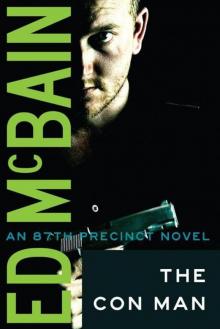 The Con Man
The Con Man Masters of Noir: Volume One
Masters of Noir: Volume One Money, Money, Money
Money, Money, Money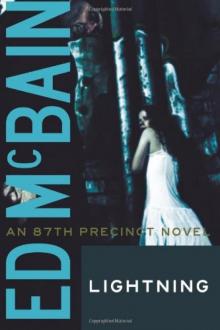 Lightning
Lightning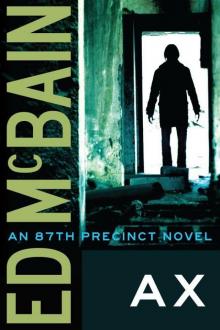 Ax
Ax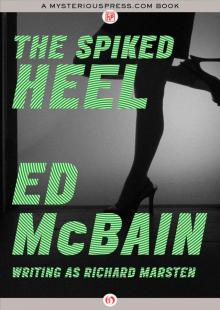 The Spiked Heel
The Spiked Heel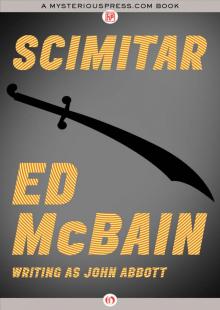 Scimitar
Scimitar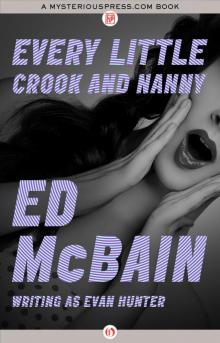 Every Little Crook and Nanny
Every Little Crook and Nanny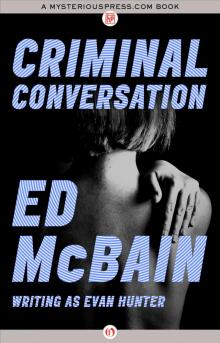 Criminal Conversation
Criminal Conversation Doors
Doors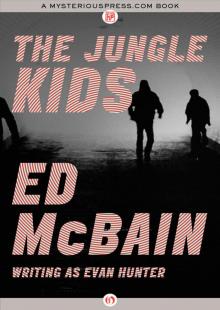 The Jungle Kids
The Jungle Kids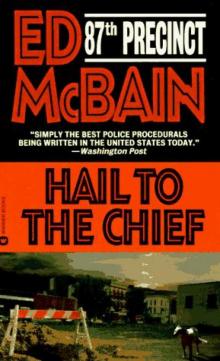 Hail to the Chief
Hail to the Chief Pusher
Pusher Killer's Choice
Killer's Choice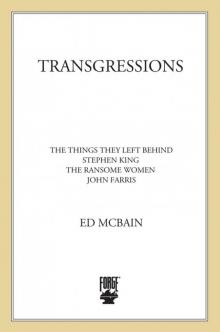 Transgressions Volume 2
Transgressions Volume 2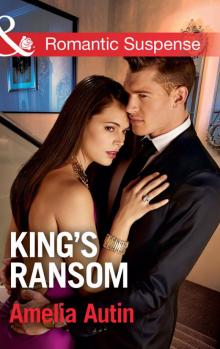 King's Ransom
King's Ransom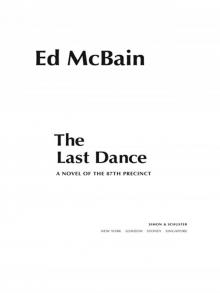 The Last Dance
The Last Dance Fiddlers
Fiddlers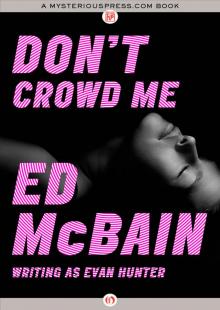 Don’t Crowd Me
Don’t Crowd Me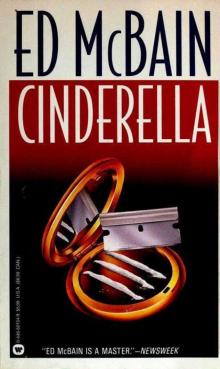 Cinderella
Cinderella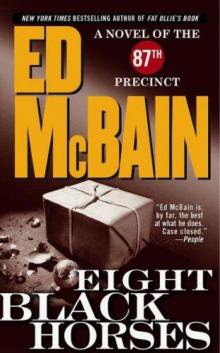 Eight Black Horses
Eight Black Horses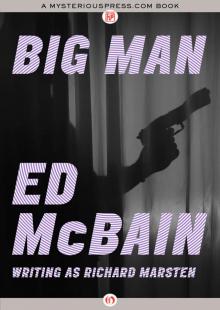 Big Man
Big Man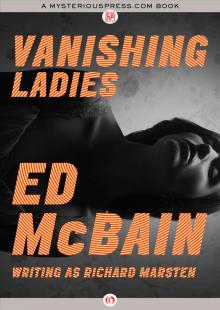 Vanishing Ladies
Vanishing Ladies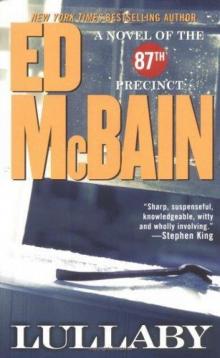 Lullaby
Lullaby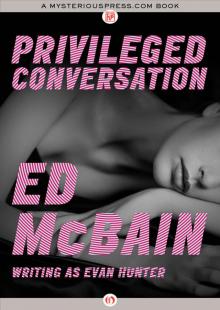 Privileged Conversation
Privileged Conversation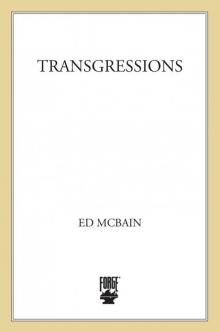 Transgressions, Volume 4
Transgressions, Volume 4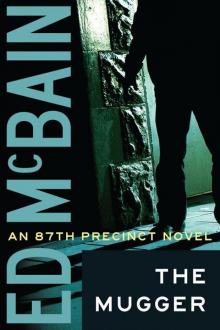 The Mugger
The Mugger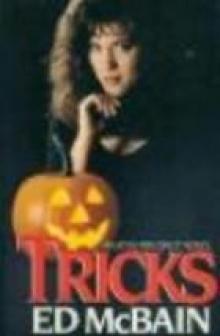 Tricks
Tricks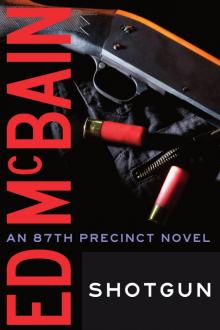 Shotgun (87th Precinct)
Shotgun (87th Precinct) Hail, Hail, the Gang's All Here!
Hail, Hail, the Gang's All Here!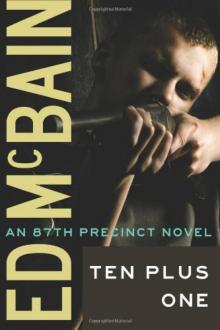 Ten Plus One
Ten Plus One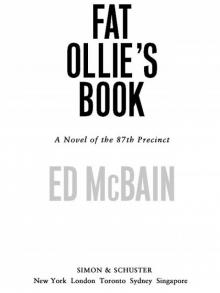 Fat Ollie's Book
Fat Ollie's Book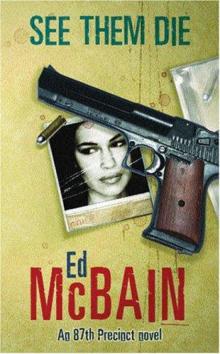 See Them Die
See Them Die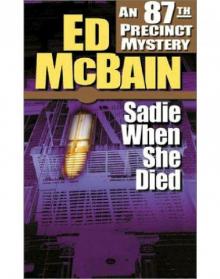 Sadie When She Died
Sadie When She Died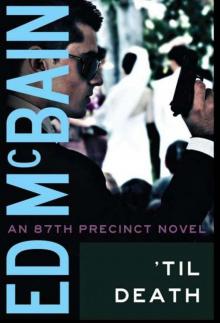 Til Death
Til Death Transgressions Vol. 3: Merely Hate/Walking the Line/Walking Around Money
Transgressions Vol. 3: Merely Hate/Walking the Line/Walking Around Money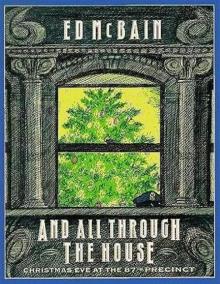 And All Through the House
And All Through the House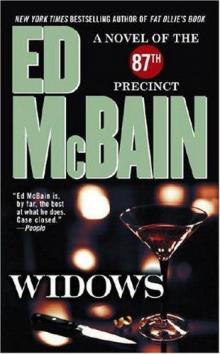 Widows
Widows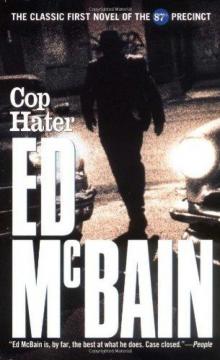 Cop Hater
Cop Hater Transgressions
Transgressions